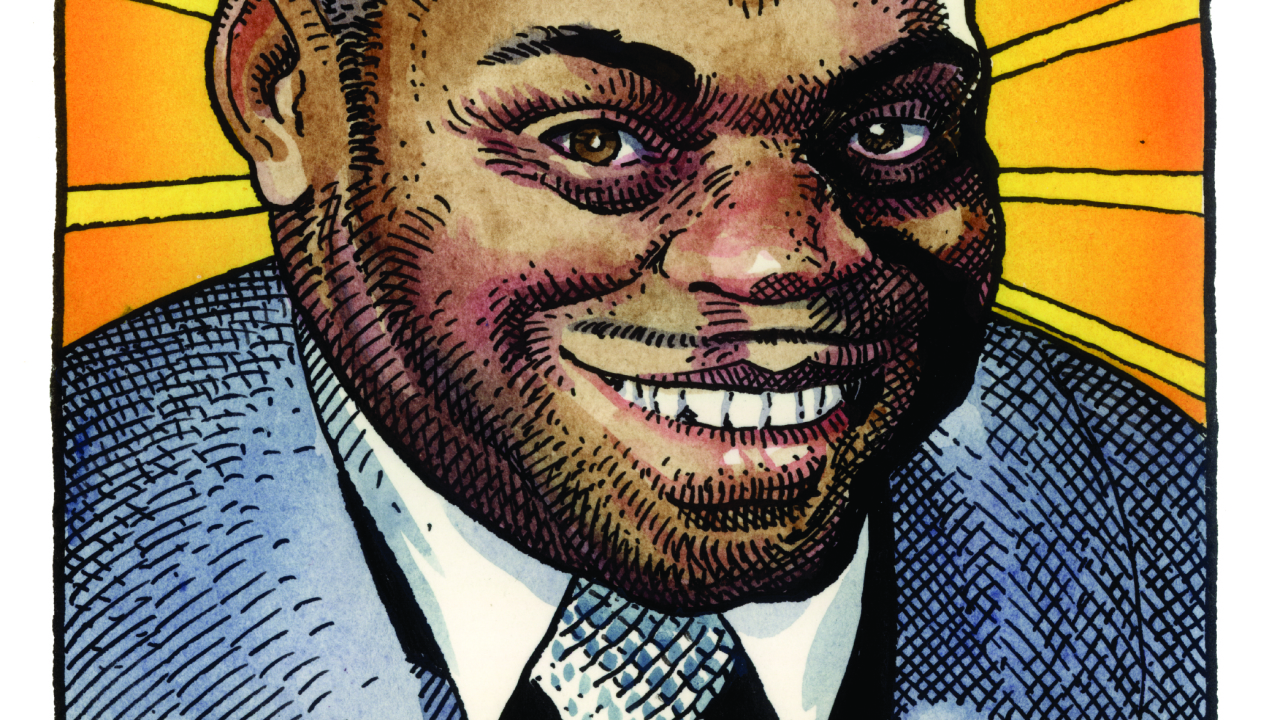In his 65 years, artist and illustrator William Stout has unleashed his considerable talents on everything from comic strips, movie work for the likes of Guillermo del Toro’s Pan’s Labyrinth and Men In Black – he created Edgar, the big bug – to helping design the theme park at Michael Jackson’s Neverland Ranch. For blues heads, Stout’s greatest moment came when he was commissioned to continue the work of legendary illustrator and fellow blues obsessive Robert Crumb. A master of palaeontological art (that’s dinosaurs), in 2013 Stout turned his attention to another group of ancient beings with the publication of Legends Of The Blues, a collection of portraits of icons intended as a sequel to Crumb’s Heroes Of Blues, Jazz And Country. The book, the first part of a trilogy in progress, earned a 10⁄10 rating in this mag. He talks us through it in his own words…
How I Became An Artist
I grew up very, very poor in the San Fernando Valley part of Los Angeles in a town called Reseda, the hottest part of the Valley. I didn’t realise how poor I was because all of the kids in my neighbourhood were in the same boat. Amazingly, nearly every boy on our block became famous in his own chosen field. Being poor gave us all a real incentive to get out of the class we were in and better ourselves.
I have been drawing since I was a little kid. My first drawings were cartoons. I remember as a wee kid, drawing a guy in jail. He was eating beans (my parents told me that was what inmates were fed). Because he was eating beans, I logically drew little fart noises emanating from his butt (“Toot! Toot!”). My parents found the drawing hilarious. I was mystified, as it was a serious drawing to me. I haven’t changed much, except that I try to include ideas in most of my material now that are intentionally funny.
How I Came To The Blues
My first exposure to the blues came to me in the same backwards fashion of most white baby boomers: through the British invasion of the 1960s. In high school I was a huge fan of The Yardbirds. They were it. I endeavoured to own everything that band touched.
One day, in my local supermarket, I came across a live LP by Sonny Boy Williamson and The Yardbirds. I purchased it immediately, then took it home and popped it onto my turntable. The music that flowed out of my cheap speakers overwhelmed me. I didn’t know it then, but it was called the blues.
I loved Robert Crumb’s blues trading cards set, Heroes Of The Blues. I thought his insightful drawings were a wonderful way of expressing his love for that music and those musicians.
The United States declared 2003 as the official Year Of The Blues. Shout! Factory, an entertainment company formed by my friend and fellow blues fan and black music champion Richard Foos (the co-founder of Rhino Records), decided to release a series of best-of CDs by prominent American blues artists. Richard licensed Crumb’s blues card images to use as their CD covers. Robert, however, hadn’t drawn some of the musicians on Shout!’s release schedule – and he didn’t want to do any more.
Shout! called and asked if I could draw Ma Rainey, Mississippi Fred McDowell and JB Lenoir in the same ink-with-colour format as the Crumb cards. I agreed. Combining two of my great loves, drawing and the blues, turned out to be one of the most enjoyable jobs of my career – so enjoyable that I did not want to stop, so I drew Robert Johnson, a favourite of mine and another bluesman missing from Robert’s card set.
Shortly after drawing Mr Johnson, I was diagnosed with prostate cancer. During my recovery from the surgery, I made a list of all my favourite blues musicians that Crumb hadn’t drawn. Fortunately for me, he hadn’t touched the Chess guys. My own field of dreams felt wide open.
I drew nonstop. Before I knew it, I had completed 50 portraits. I showed them to my old friend Denis Kitchen – Robert Crumb’s book agent. He suggested collecting them into a book. I agreed, but with the condition that we secured Robert Crumb’s approval on the project. I didn’t want Robert to feel I was treading upon his turf. With Robert’s support, Denis took my images to Abrams ComicArts, the same publisher who printed Crumb’s card sets as a book. Abrams asked that I expand the book to 100 entries. I heartily agreed. Legends Of The Blues is the first of a three-volume set. The other two will be Legends Of The British Blues and Modern Legends Of The Blues.
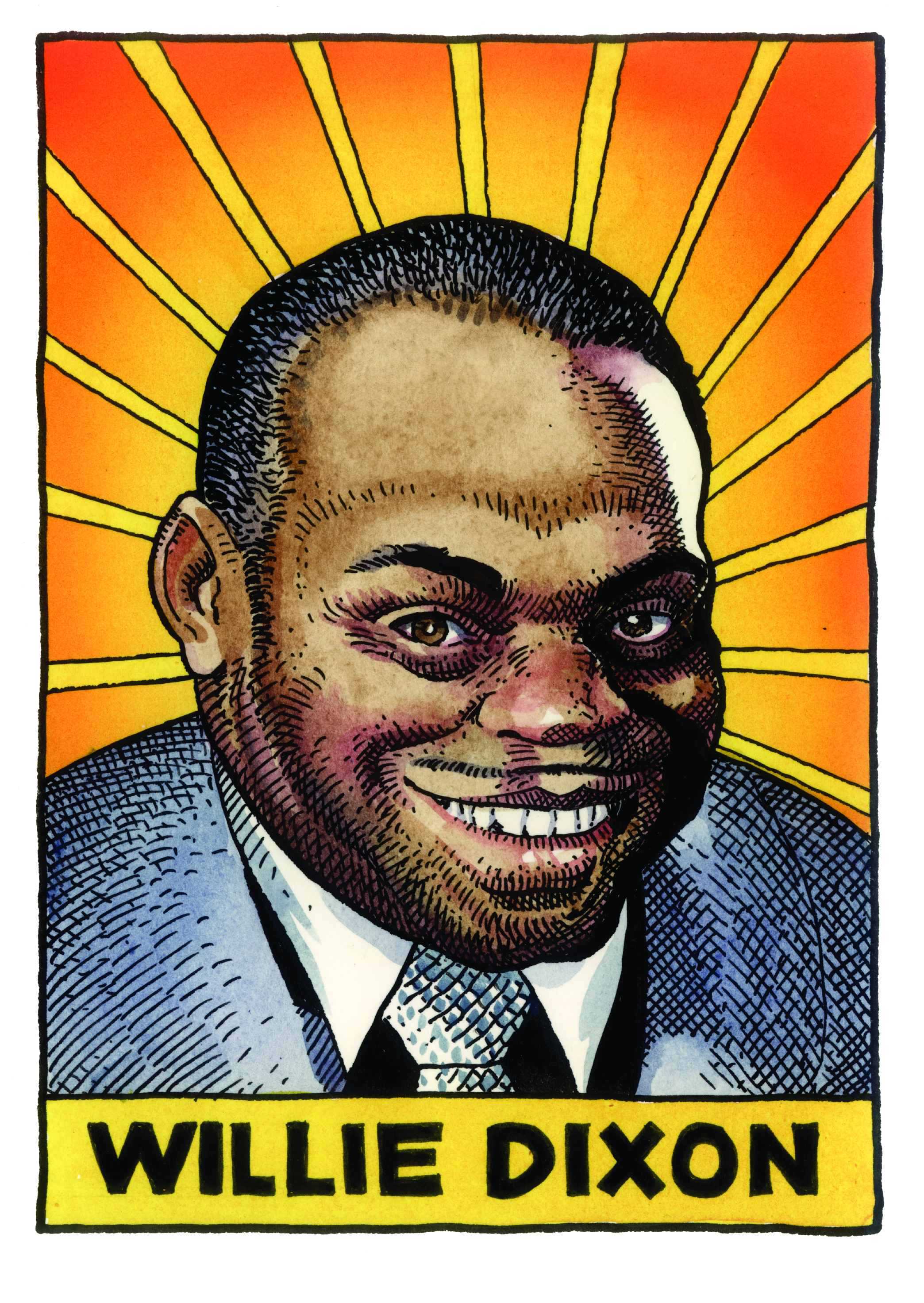
Willie Dixon
Willie Dixon is the author of what I consider to be the great American blues songbook. It seems like Mr Dixon wrote 90 per cent of what could be easily considered to be the blues’ greatest hits. My first drawing of a bluesman was an etching I created in my etching class in art school.
I was the original art director for the record company Varese Sarabande. Stopping in one day at Varese I discovered that Willie Dixon was living not too far from Bo Diddley in the San Fernando Valley. His LP, I Am The Blues, was released on CD by Varese Sarabande. I will regret to the end of my life that I never met Mr Dixon when I had the chance.
I dedicated Legends Of The Blues to two people: Robert Crumb and Willie Dixon. The sun beams emanating from behind Willie in my portrait were included because, in my humble opinion, the sun rises and sets on the great Willie Dixon.
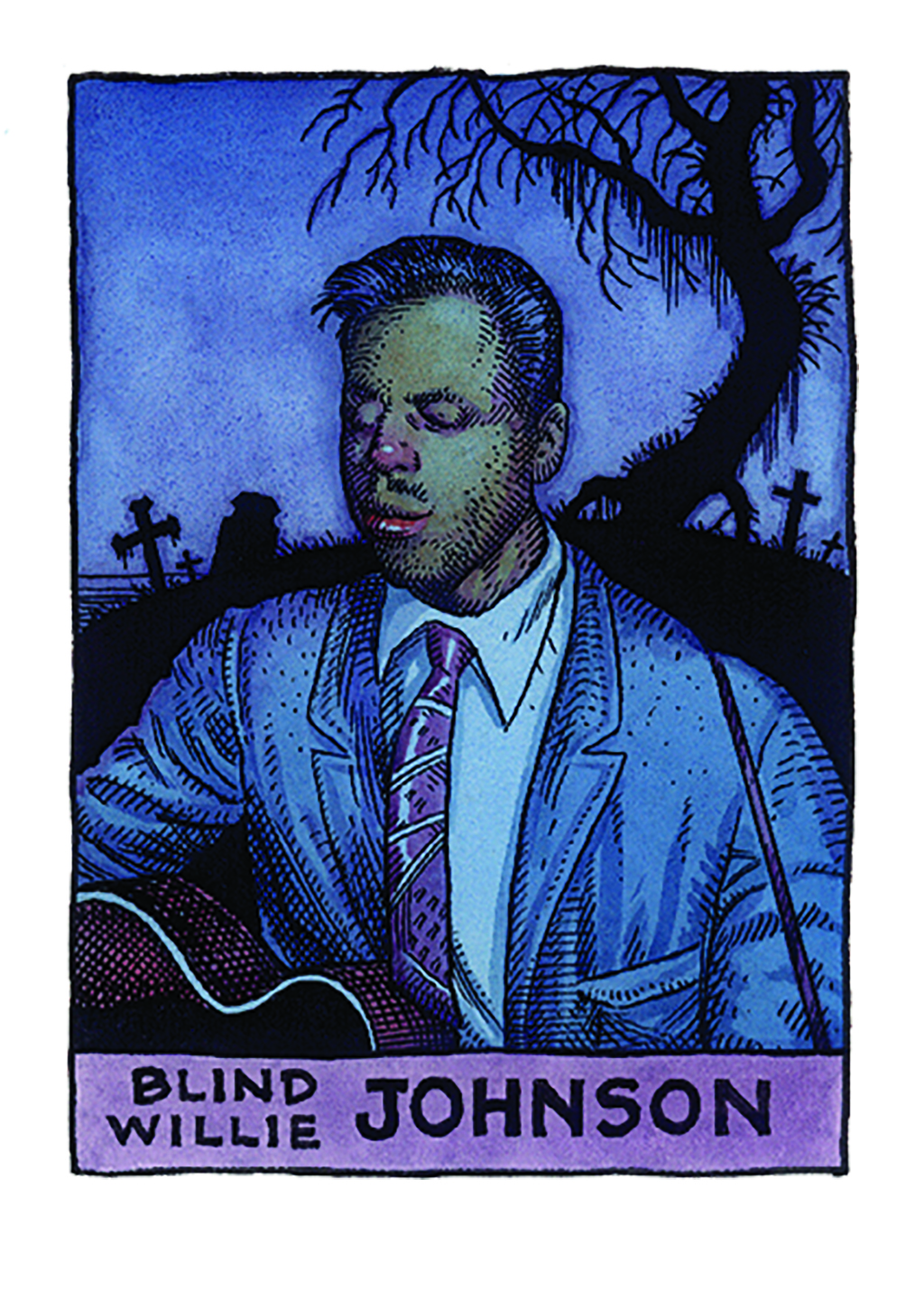
Blind Willie Johnson
One of the two bluesman that both Crumb and I drew was Blind Willie Johnson, whose recording Dark Was The Night, Cold Was The Ground – one of the greatest, most sublime and haunting recordings ever made by a human being – is winging its way through space on the Voyager spacecraft as an example of the highest capabilities of the human spirit.
I set Blind Willie in a graveyard at twilight in an attempt to capture the mood of that recording.
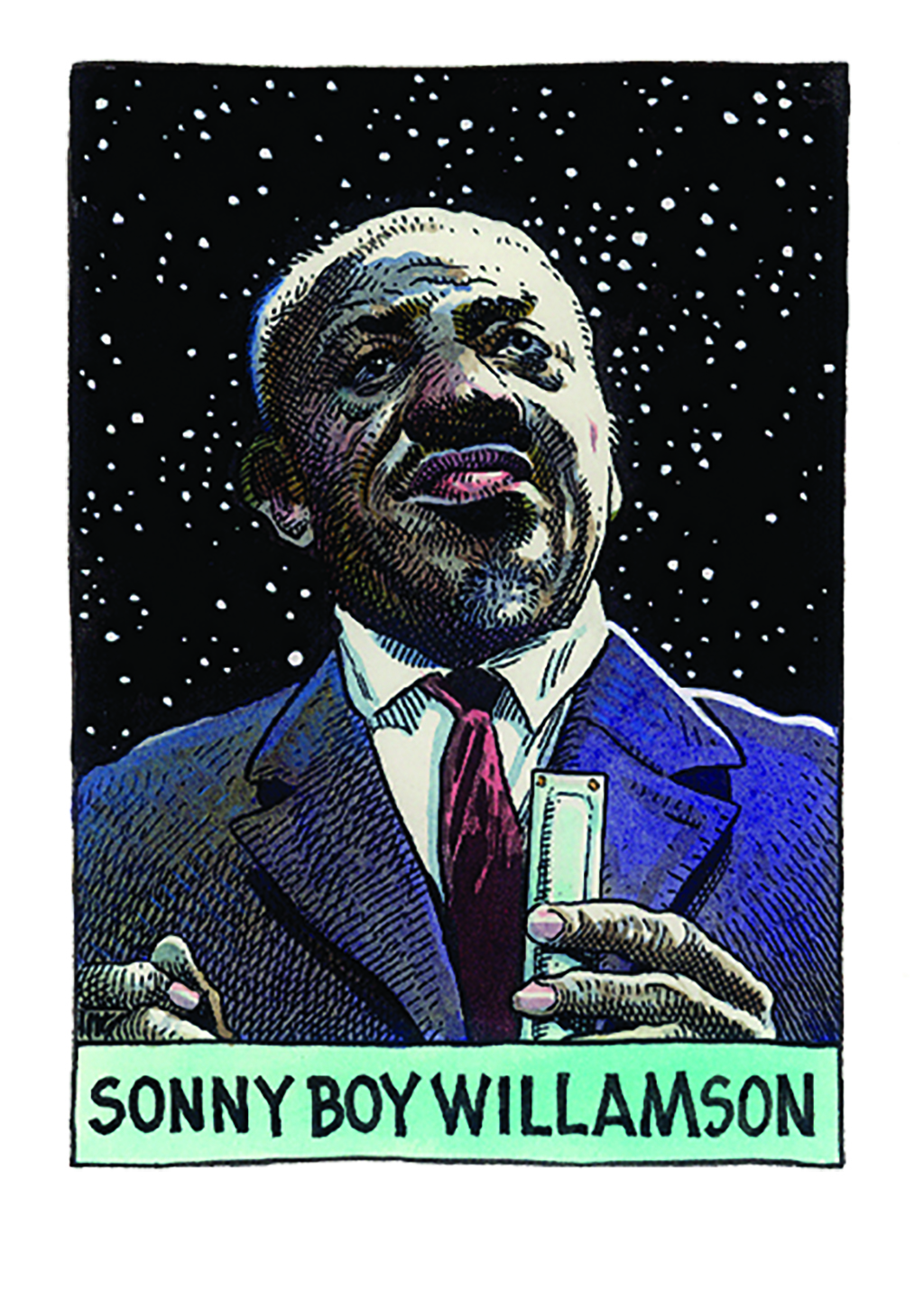
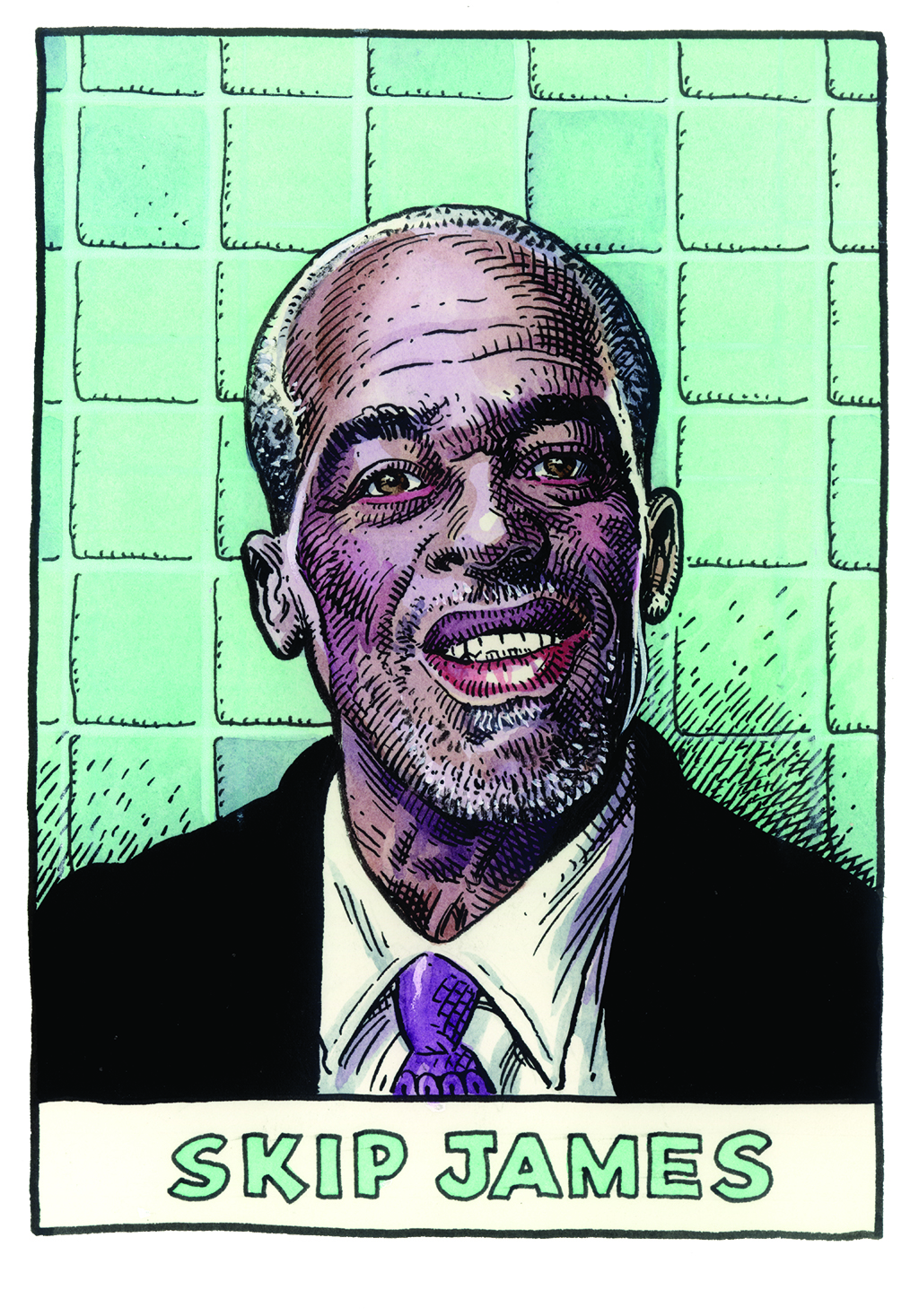
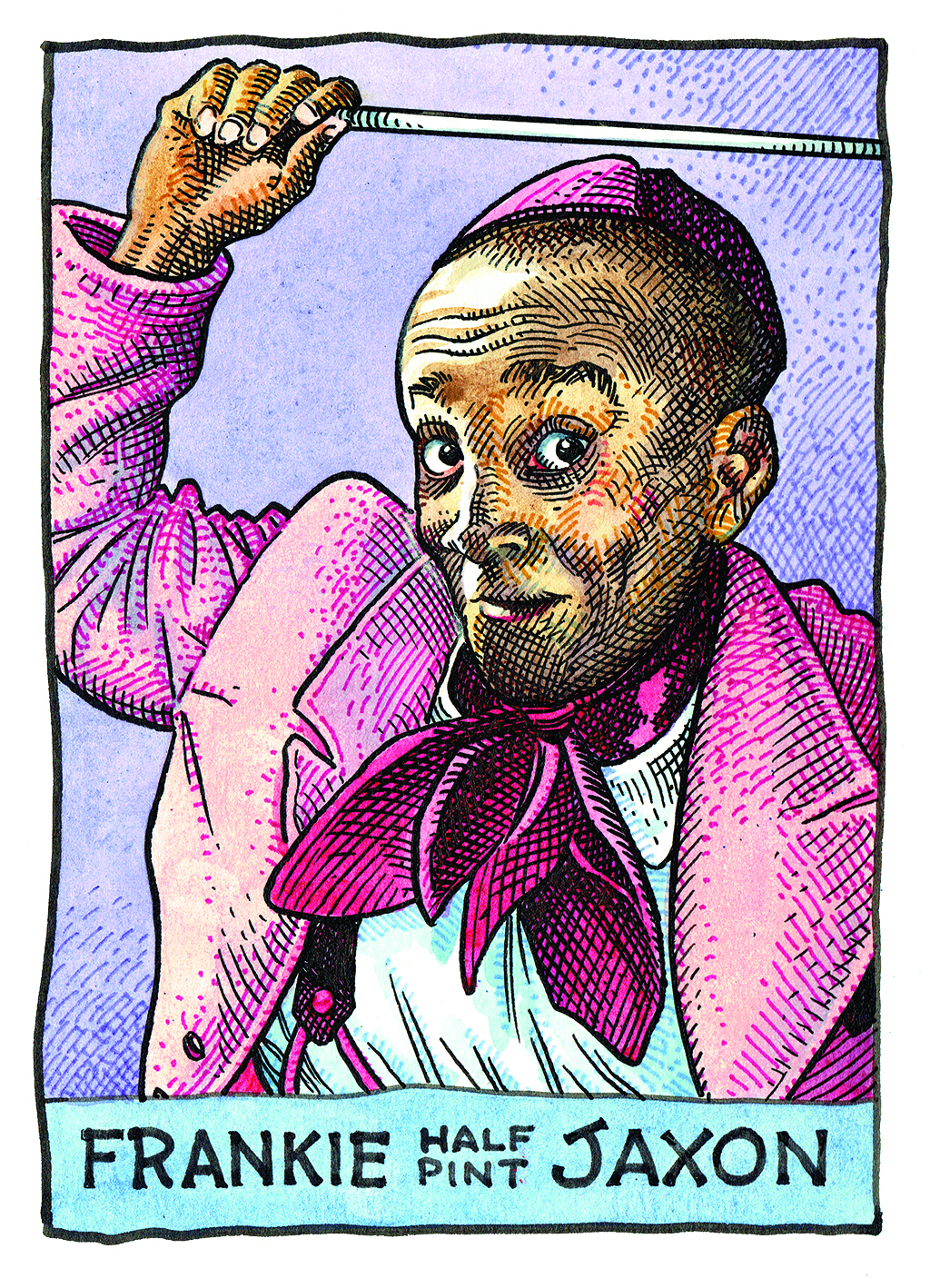
Frankie ‘Half Pint’ Jaxon
The most intriguing entry for me in Legends Of The Blues is Frankie ‘Half Pint’ Jaxon. Jaxon was a real renaissance man of the blues. He was a hit songwriter, a terrific singer (he was the lead singer for the popular Harlem Hamfats) and a comedian. He had a drag act and designed shows for Bessie Smith and Ethel Waters. Yet, at the peak of his career, he dropped out of show business to work for the Pentagon. He was in Washington DC for two years, then was sent to Los Angeles, where he disappeared. No one knows what happened to him, not even when and where he died (or if he even died at all). He was a cute little guy. There are no colour photos of him. I put him all in pink to playfully indicate his gayness and tried to capture that mischievous twinkle in his eye. I sure would like to know more about this most mysterious of bluesmen.
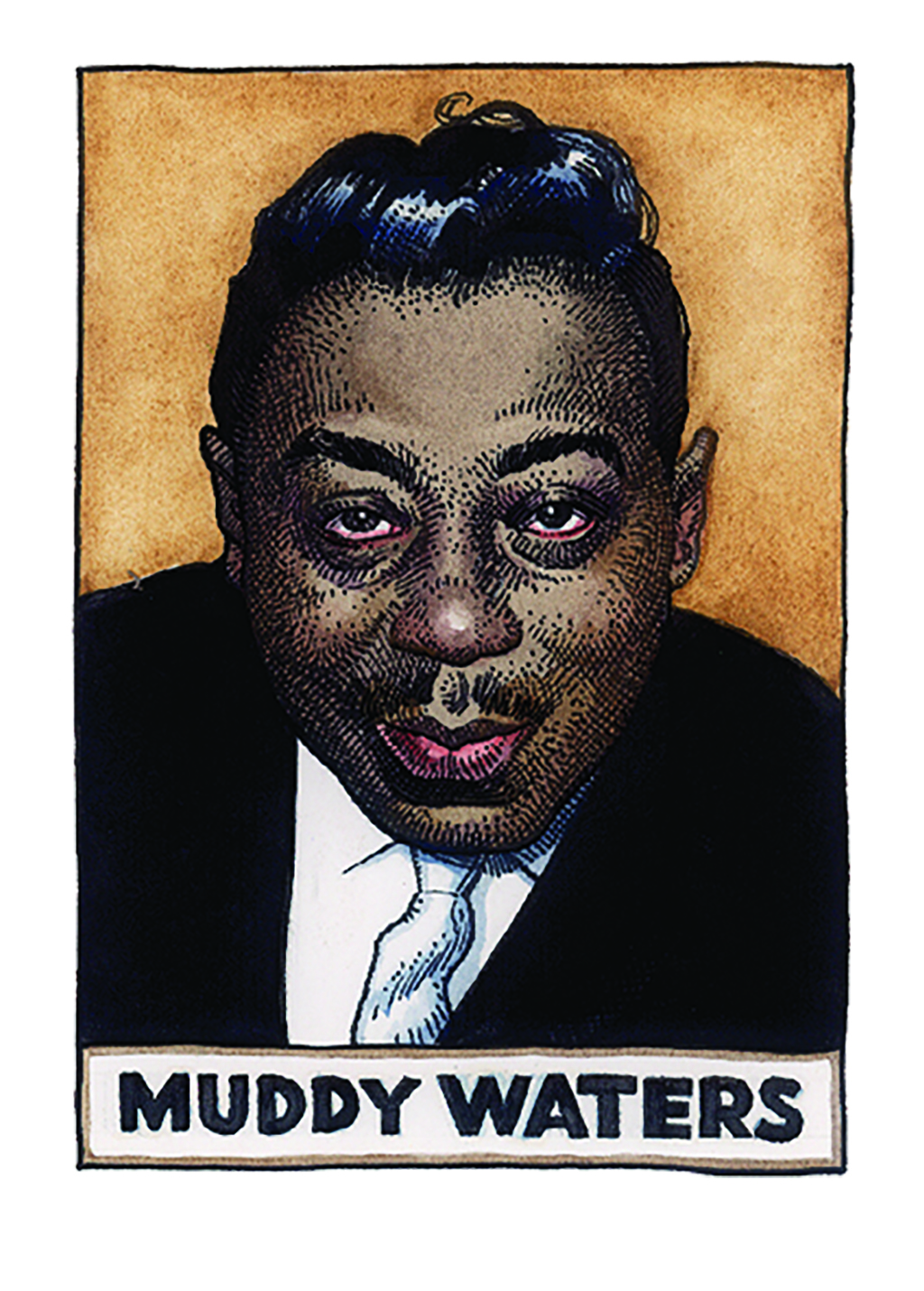
Muddy Waters
Perhaps no other player represents post-war Chicago blues and Chess Records like Muddy Waters does. Sexy, classy, admired and feared, Muddy excited groups like The Rolling Stones and Manfred Mann. His thrilling records were covered by most of the British blues bands. Muddy’s recording of Willie Dixon’s You Need Love was lifted by the Small Faces and performed as You Need Loving on one of their first LPs. Robert Plant saw the Small Faces perform it live, then turned it into Led Zeppelin’s Whole Lotta Love, not realising the song’s earlier origins.
“What colour should I make the background?” was a question I often asked myself during the creation of Legends Of The Blues, wanting as much variety as possible. In Muddy’s case the choice was obvious: something suggesting the colour of mud.
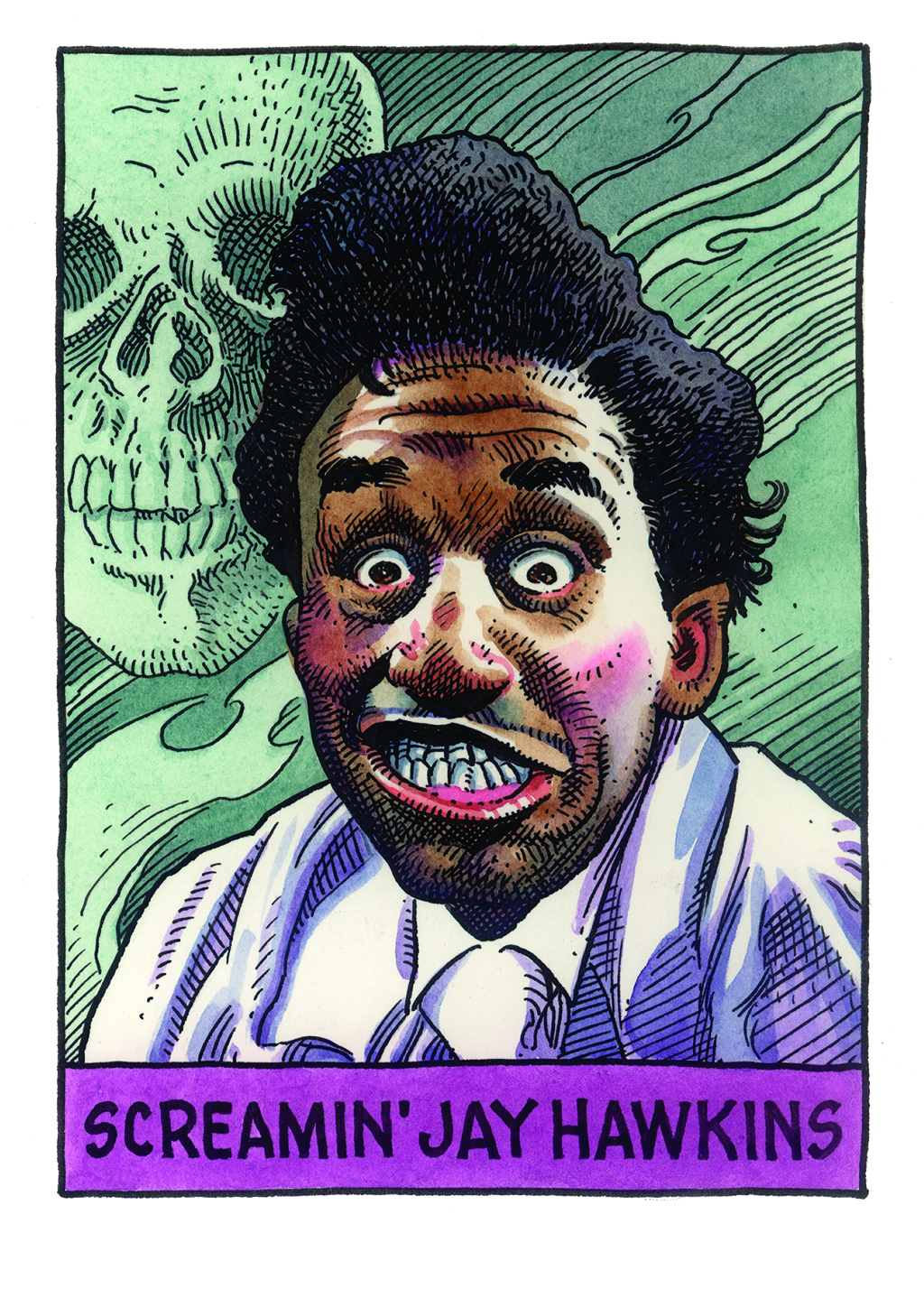
Screamin’ Jay Hawkins
Jay Hawkins was a friend of mine. We met on the set of the movie American Hot Wax. We saw each other socially and exchanged correspondence when he was out of town. He was a huge guy with an eidetic memory for 1950s rhythm and blues. I could play him any R&B record from the 50s. With one listen he could tell me who each player was on the record. Amazing!
In my portrait of Jay I tried to capture his wild onstage persona, the scary-but-funny guy who arose from a coffin to sing his signature tune I Put A Spell On You or his classic Constipation Blues. I miss this surprisingly kind and gentle man.
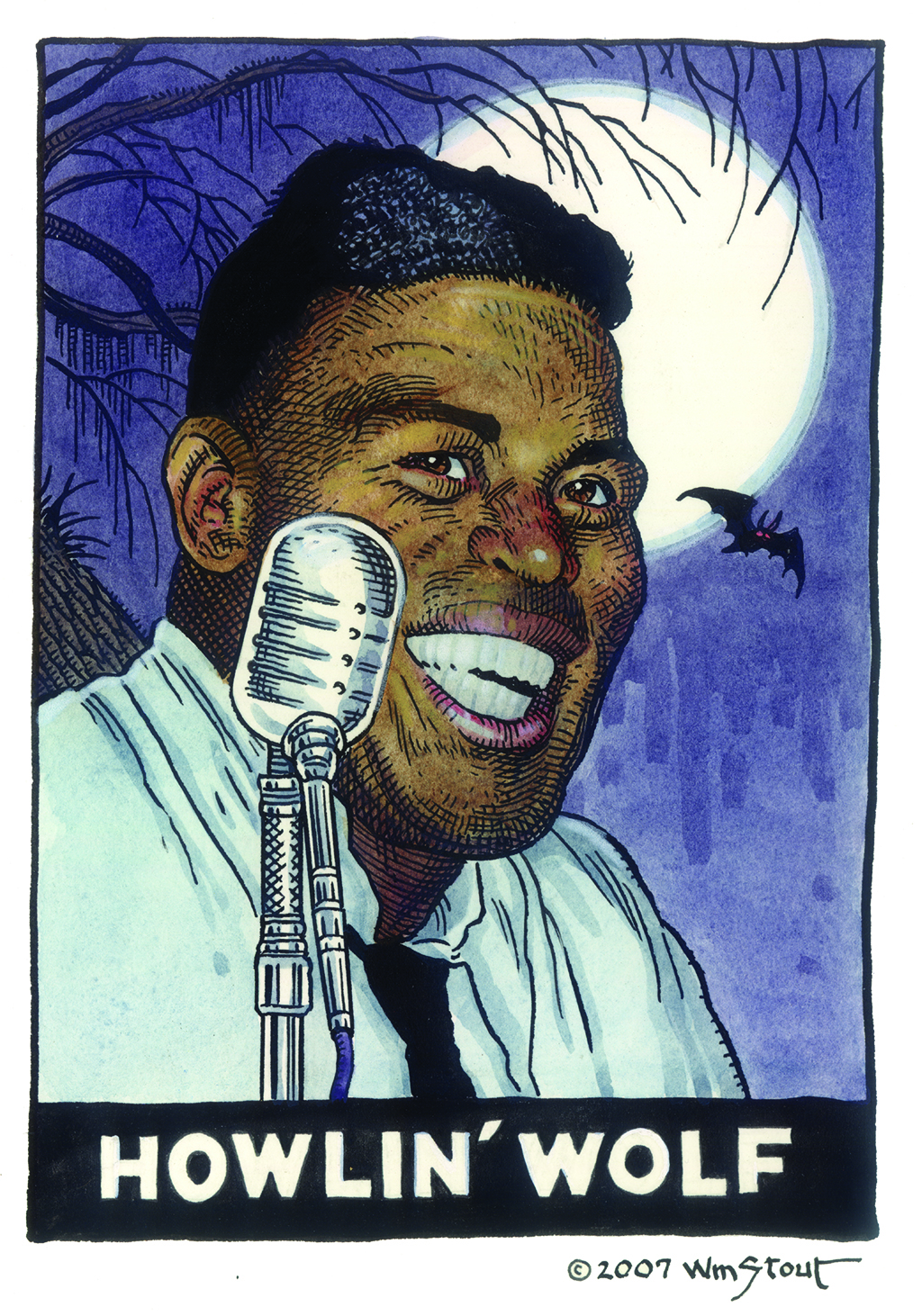
Howlin’ Wolf
Of all the men and women in my book, Howlin’ Wolf was the one who ultimately commanded my respect and admiration more than anyone else.
Chess Records’ nickname was Cadillac Records. Part of their negotiating savvy included presenting a new Cadillac to whomever they wanted to sign to the label – neglecting, however, to inform their future stablemate that the Cadillac was not actually a gift, it was coming out of the musician’s future royalties. They couldn’t do that with Wolf. Chester Burnett (Wolf’s real name) was already a star in Memphis when he was approached by Chess Records. When the Wolf arrived in Chicago to negotiate his deal with Chess, he already owned a new car. He arrived in Chicago with thousands of dollars cash in his pockets – unheard of for a bluesman back then. He was able to cut himself a good deal. A high school dropout, Wolf used some of his Chess money to finish high school. He then enrolled in a Chicago business college, figuring that if he were a good businessman he could hire the best backing band in Chicago. On top of all that he became the first blues bandleader to give his musicians health care benefits. More than any other bluesman, Chester Burnett was The Man.
In his portrait I played up his spooky stage persona (full moon, a bat and a haunting bare tree) yet also attempted to capture the kind, engaging gentleman lurking within the crazed singer who scarily stalked the stage.
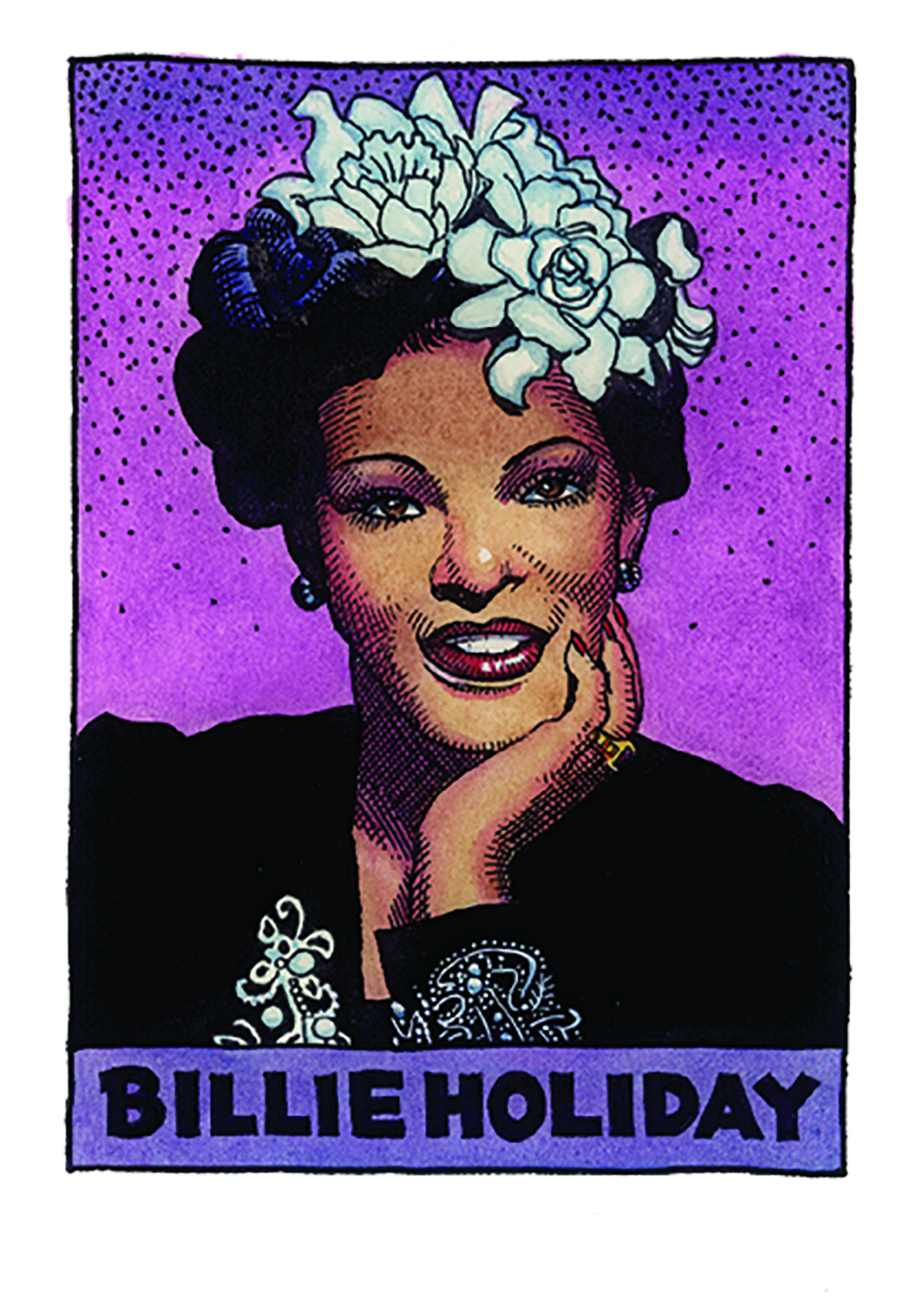
Billie Holiday
After hearing her music and learning her heartbreaking life story, I couldn’t help but fall in love with Lady Day. Her rendition of the controversial Strange Fruit haunts me to this very day.
In drawing and painting her portrait I tried to emphasise Billie’s beauty, her femininity and her elegance.
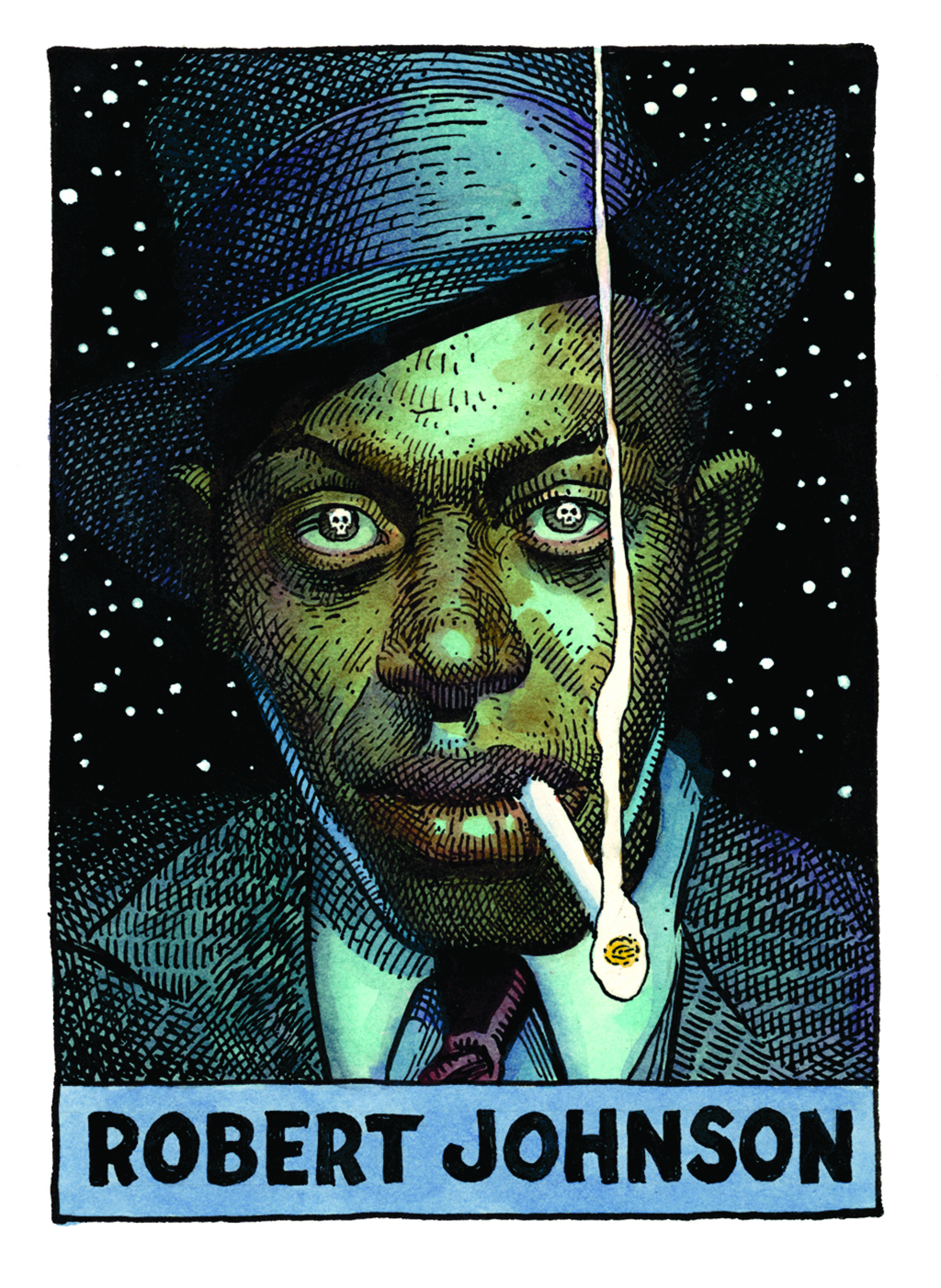
Robert Johnson
I was extremely happy to learn that the legendary bluesman Robert Johnson was not part of Robert Crumb’s blues card set. His was one of the first portraits I felt compelled to draw. This particular image of mine is so popular that I have painted four different versions of it, including one in oil paints. In my portrait of him I changed his pupils into skulls – an indication of Robert’s short, violent life.
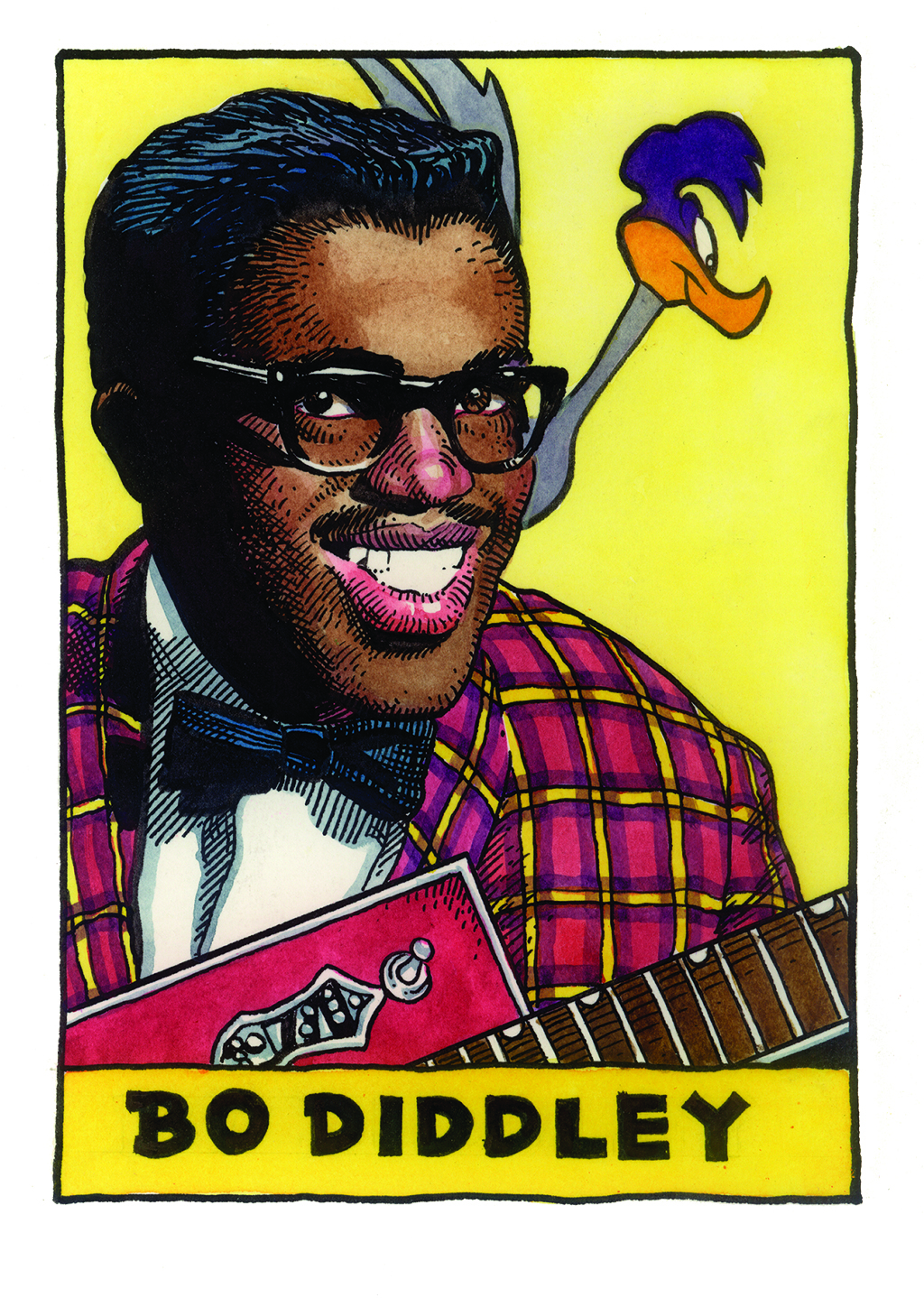
Bo Diddley
For a while, Bo Diddley lived in nearby Granada Hills. He gave a free concert one afternoon at Cal State University, Northridge. The guitar player in my band, James Demeter (now a famous musical equipment maker to the stars), attended CSN and caught the concert. Unfortunately, Bo’s band got frozen in traffic and never made it to the show, so Bo decided to play his entire set solo.
After hearing that Bo had lost his backing band that afternoon, I asked Jamie: “So, how was Bo, how was the show?”
“It was simply the greatest concert I have ever seen.”
One of my favourite Bo Diddley songs is Road Runner, hence the inclusion in his portrait of the cartoon character who inspired the song – along with Bo’s trademark rectangular guitar. “Beep beep!”
